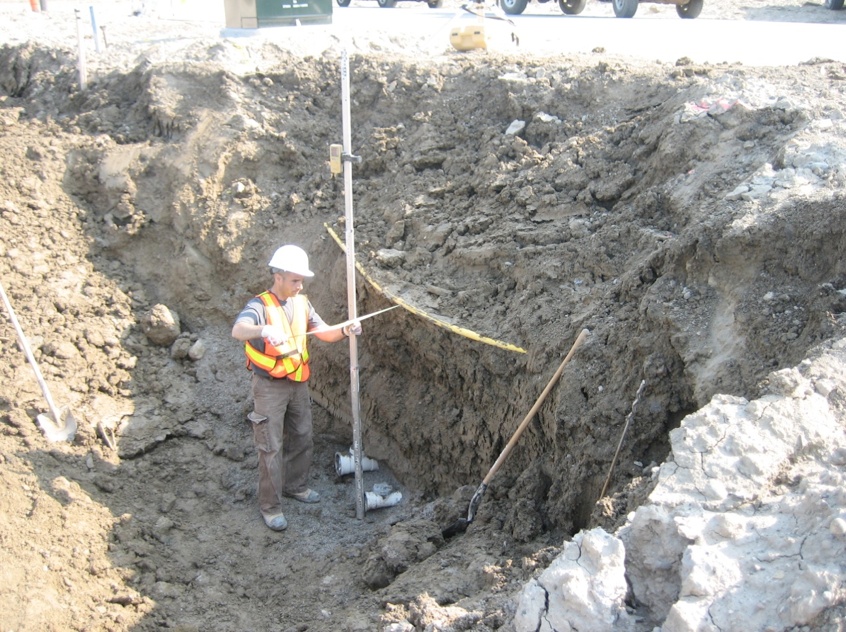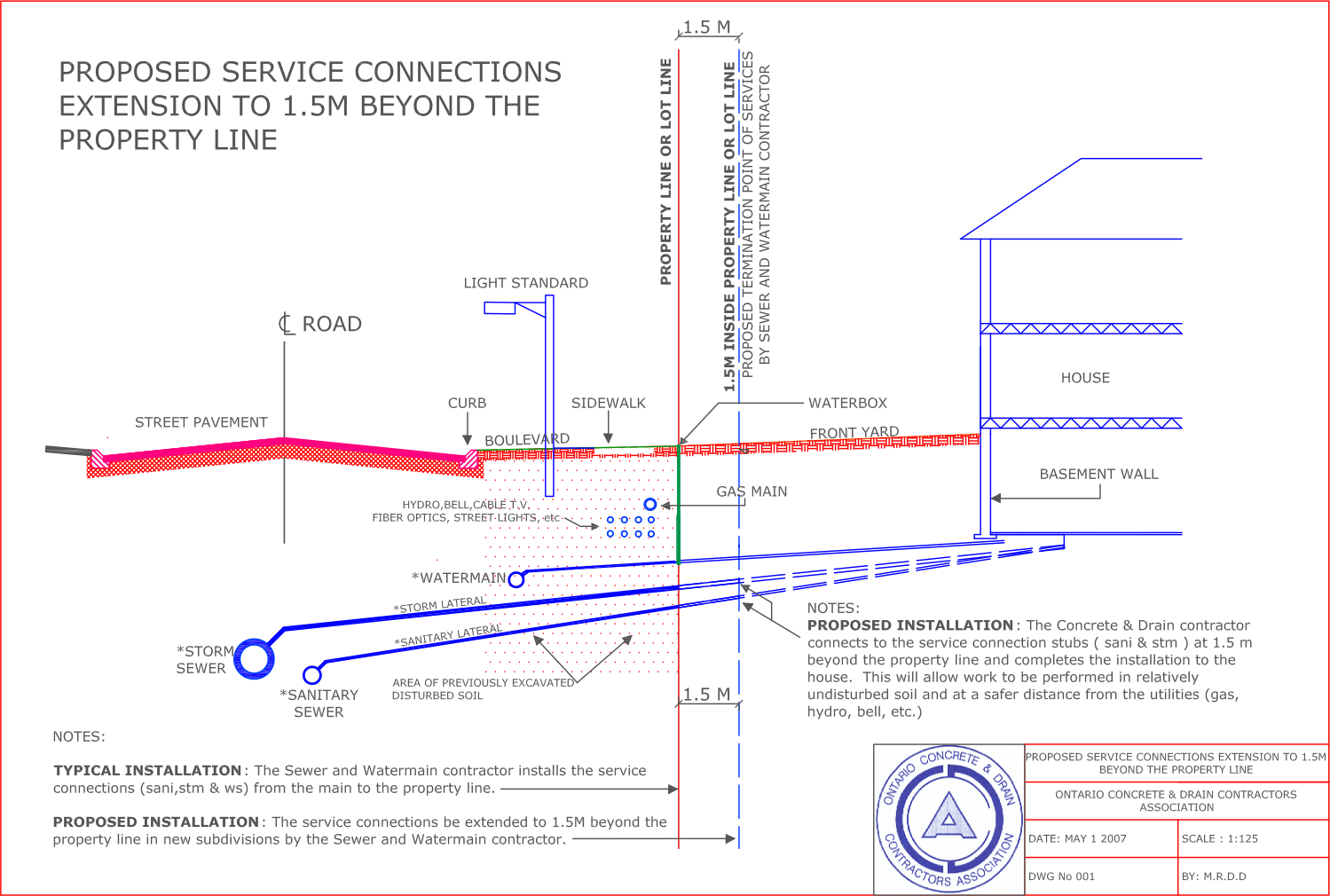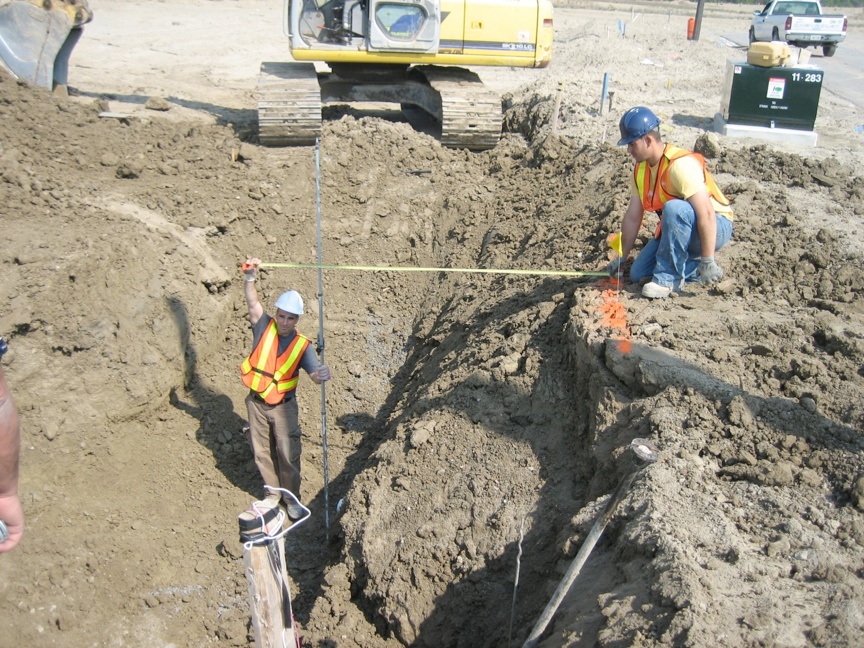
Best Practice - Extension of Sewer Laterals
Current Situation
In some municipalities, unfortunately the practice remains that the Storm & Sanitary Sewer and Watermain lines are installed prior to and under the road/boulevard/sidewalk, with lateral extensions taken off each line to provide service to each building in the development. These lateral extensions are typically terminated and capped underground at the property line or lot line.
Main utility lines, such as natural gas, telephone, hydro, cable television, and fibre optics, are then installed, and will eventually provide service to each building. Their location is typically much closer to the surface than the Sewer and Water lines since they are not adversely affected by frost, and very close to the street side of the property line or lot line. Proximity to the lot line is maintained so as to minimize potential damage to the road and disruption of traffic if the utility lines need to be accessed after the development work is complete.
The Problem
Proximity to the lot line of the utility services creates at least two hazards for contractors accessing the capped lateral extensions when the time comes to make the connection to the buildings. First, since the utility services are virtually directly above the capped lateral extensions, there is a high risk of them being struck during excavation. Damage to utility services can be not only financially costly, but can have fatal consequences as well.
Second, this intersection of buried services often results in an excavation with a very steep bank, a situation made even more potentially dangerous by the fact that the soil is previously excavated and therefore not predictably stable. Increasing the excavation slope would, in the vast majority of cases, lead to completely exposing many - if not all - of the utility services.

This photo illustrates how the capped laterals are positioned almost directly under the utility infrastructure. This close proximity makes it difficult to attain the proper slope and represents the typical and potentially dangerous situation the machine operator and the concrete and drain worker are confronted with on a daily basis when excavating to expose the laterals which were terminated at the property line. This is the inherent problem with the standards that some municipalities provide to the consulting engineers and which their design must adhere to. These standards unfortunately are what the sewer and watermain contractors must adhere to even though they could easily extend their scope of work and eradicate the problem by implementing the solution above.
The Solution
Extending the laterals for the storm and sanitary drains 1.5m inside the lot line when the storm and sanitary sewer lines are installed will greatly reduce hazards when time comes to bring the connection into the building. The capped lateral extensions will be at least 1.5m away from the intersection point with the underground utilities, allowing them to remain undisturbed during excavation, and allowing the banks of the excavation to be cut with sloped sides.

